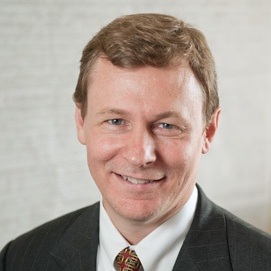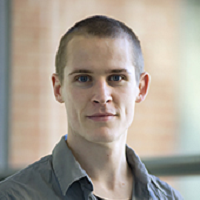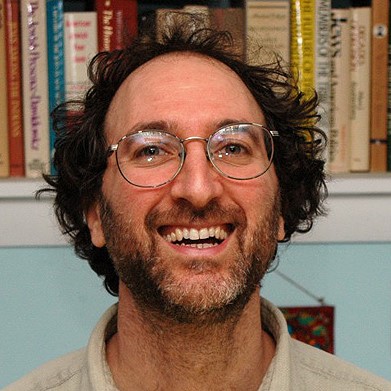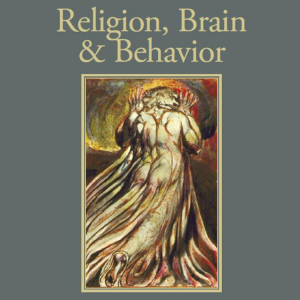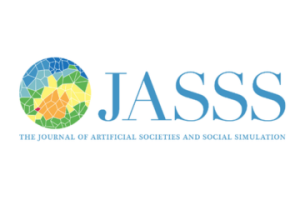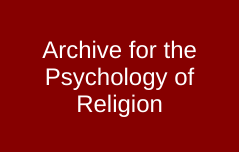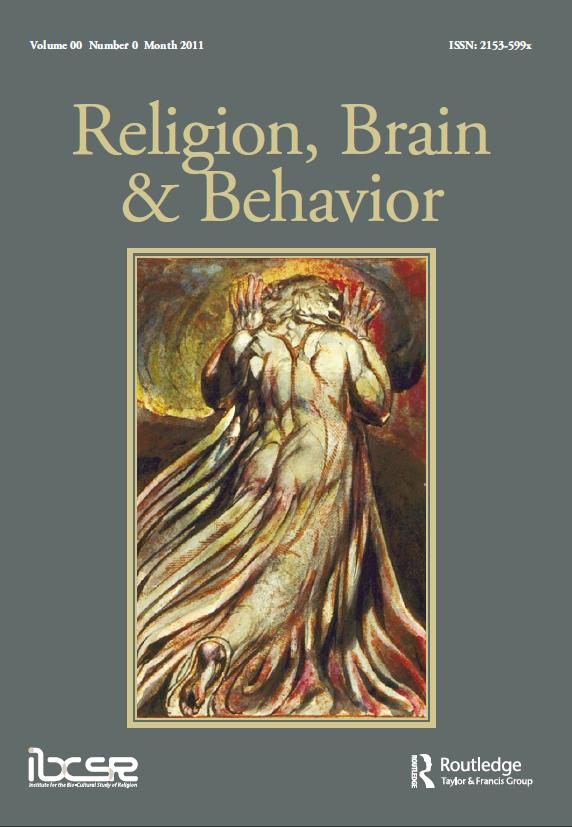
In April 2011, the first issue of Religion, Brain & Behavior was published by Taylor & Francis, adorned then as today with William Blake’s “Web of Religion”. The journal provides “a vehicle for the advancement of current biological approaches to understanding religion at every level from brain to behavior,” welcoming contributions from fields such as cognitive neuroscience, genetics, and physiology to evolutionary anthropology, archaeology, and epidemiology.
At the time, no journal dedicated to the cognitive, evolutionary, and neurological study of religion existed, and its founding editors – neuroscientist Patrick McNamara, anthropologist Richard Sosis, and philosopher of religion Wesley J. Wildman – had considerable difficulty finding a publisher who would buy into the idea.
Today, out of 594 religious studies journals, RBB has the second highest CiteScore, a metric that ranks journals by the number of citations articles receive on average each year. This is a big accomplishment for RBB and its current editors – Sosis, Wildman, philosopher and sociologist Joseph Bulbulia, and neuroscientist Uffe Schjoedt.
RBB brings a unique appreciation across the sciences-humanities divide to a field often contentiously balancing the two.
“In the 10 years since RBB was born, there’ve been quite a few efforts to try to join scientific and humanities approaches within religious studies. That’s sometimes produced hardening of positions with scientific people blowing off the humanities people as not worth talking to and humanities people blowing off the scientific people as reductionistic and ignorant. And the end result is that things have gotten worse, I think. But fortunately there are a few places where the humanities and the sciences combine readily and RBB is one of those places. And we’re proud of that and it’s important to us. We hope that that way of thinking and working is going to extend its reach over time,” Wildman comments.
The editors largely attribute the success of the journal to this commitment to bridging the gap between the sciences and the humanities by combining a complementary and comprehensive approach. They are also committed to producing the best articles through the best people, with a highly qualified and interdisciplinary editorial team and contributors.
Bulbulia remarked that, “Rich will sit down with someone who’s not writing in English as their first language, and he’ll take a month to work through their article with them. And he’s not even on it. He’s the kind of person that really cares about quality. And similarly for Wesley – he’ll agonize over what might seem to be small and trivial issues, but they have a real personal impact on people. He cares about that and we get it right – or we try our best to get it right. And people know that, and I think they appreciate that and they send things to the journal because we combine integrity, but also with a kind of humanity.”
CMAC Postdoctoral Fellow Dave Rohr recently took some time to interview the current editors of RBB ad discuss the past nine years of the journal, along with the scientific study of religion more generally and what the next decade may hold for the journal and the field.
The scientific study of religion is still relatively young. What do you see as the most important developments in the field over the last decade?
“The first is the growing awareness of the need to be very precise in the way we develop hypotheses and test them. Now there’s pre-publication of hypotheses. There are open science approaches to data sets and to analyses, so that it’s possible for people to replicate everything from beginning to end in well-designed studies. That’s critical. Otherwise we don’t make any progress, we just go round and round in circles. The second thing that’s happened in the last 10 years is the flowering of computational social simulation related to religion. Policy simulation and social simulation is older, but the application to religion is something that’s just happened recently. And it’s a game changer, I think, because it’s allowing us to use artificial complex systems to study real world complex systems such as religion.”
“The first is the growing awareness of the need to be very precise in the way we develop hypotheses and test them. Now there’s pre-pI see a renewed interest in religious experience, this time from a cognitive angle. The field is now flourishing with both exploratory and hypothesis-driven studies that use neurocognitive models to understand how religious experience works. In fact, many RBB papers have combined exploratory approaches with hypothesis-driven research to study the phenomenon in more or less controlled settings. This is a completely new way of exploring religious experience, which has yielded many interesting new insights.”
Sosis answered that the phylogenetic work of scholars such as Joseph Watts has revolutionized the field. Watts and his colleagues built a historical and cultural database of 116 Austronesian cultures, named Pulotu, which provides answers for each culture to hundreds of questions from whether people believe in gods that punish evildoers to whether human sacrifice is practiced. Because these island cultures are intimately related culturally and linguistically, the research team was able to use phylogenetic methods similar to those employed in evolutionary biology to plausibly trace the spread of culture from one island to another. With that evolutionary lineage in place, the database can be used to asked questions like whether social stratification preceded the emergence of big, punishing gods or vice versa and whether Christianity’s spread was caused by its egalitarian social doctrines.
“Joseph Watts and Uffe Schjoedt are examples of relatively recent hires who were doing utterly and totally original work, even better than William James and Emile Durkheim, in my view. Uffe was showing that prayer was not one thing. James in his Varieties of Religious Experience also sought to illustrate prayer’s variety; and now Uffe was observing that variety by neuroimaging the brains of praying people, showing how prayer worked fundamentally differently even among people in a homogenous, narrow society. And Watts was rebuilding a Pacific database systematically in a way that Durkheim could have never dreamed of.” In addition to citing these specific studies, Bulbulia highlighted the growth of interdisciplinary and international research teams: “In the 1980’s and 90’s the scientific study of religion meant sociology, mostly, a little bit of psychology. And now it’s a no-holds-barred enterprise where you have collaborative teams of experts from a range of sub-fields coming together to do work that no one could have dreamed of doing alone 20 or 30 years ago. So there was a shift from being a singular pursuit of a philosopher in an armchair, or maybe a small experimental lab, to a collaborative enterprise that often involves teams working across oceans and time zones with diverse expertise coming to play in answering a well-defined question for which there’s both data and some need to conceptually reason about it.”
What developments in the scientific study of religion do you hope to see in the coming decade?
“It’s possible that empirically backed interpretations are perspectivally related, and if you just take a different stance, a different point of view, a different slice through the dataset, you see that they’re complimentary rather than contradictory perspectives. But in order to demonstrate that clearly you need to have a complex enough simulation that you can manifest inside that simulation the same perspectival reality you think might be going on in the real world. If you create the synthesis in the artificial system, in the simulation, then you’ve got a very powerful reason to think that the problem causing the conflict of interpretations is actually a perspectival difference. And that is a major advance in the field.”
“It is still not clear how culturally transmitted information can overwrite sensory experience, e.g. in hypnotic hallucinations, placebo and religious experience. Rigorous hypnosis and placebo research has improved our understanding, and predictive processing provides a useful theoretical framework. But the idea behind predictive processing is that prior experience affects our perception by changing our brain’s ‘most likely’ model of the world, so the fact that verbal information can produce hallucination-like experiences is still a puzzle. What enables a normal functioning predictive brain to see or hear a supernatural presence for the first time?”
“I’d love to see further analysis of demographic issues regarding religion. This is sort of getting back to basics. Traditional behavioral ecology models were all looking at energy decisions and mating and reproductive decisions. And really we need to get back to some of those issues, because basic questions about the adaptive consequences of religion are still unknown. We all recognize that religious groups are out-reproducing nonreligious groups, however you want to define that. Obviously, you have exceptions, you have celibate religious communities. But by and large there does seem to be a relationship between religion and reproductive output. So answering why that is and answering the consequences of that: Do you find the traditional life history tradeoffs between quantity and quality? Are the larger family sizes that are evident in religious communities negatively impacting child success? Those are big questions that I’d like to see answered.”
Bulbulia said he thinks the development of national scale longitudinal databases will soon revolutionize the field. Collecting data on the same people over years and even decades makes it possible to examine how unpredictable world events such as the COVID-19 pandemic affect people’s religious beliefs and practices.
What is your favorite of the 35 issues of Religion, Brain & Behavior?
“RBB did a special themed issue on the work of Iain McGilchrist. That was something that I edited with Sarah Coakley, and we worked very hard with Professor McGilchrist and with commentators to produce an informative issue. That issue has gotten a lot of traction. It’s one of our biggest and brightest issues in terms of popular reach. Plus, it’s open access so everyone can look at it, thanks to the John Templeton Foundation’s sponsorship. The content isn’t my favorite, necessarily, but working with Sarah was a true joy. And the production gauntlet was so complicated in this case and so drawn out, it was incredibly satisfying eventually seeing it in print. It’s good in the sense that after you’ve done a ten-mile swim and you collapse on the beach, you’re not going to drown. You made it back to solid land and you just need to sit down. It’s good in that sense: the swim is over.”
“That issue has a lot of cutting-edge theory, and each contribution provides fascinating research questions for future research. In 2027, I will be thrilled to look back on this issue and compare it with what was actually achieved over the last decade.”
“If I had to pick one issue, it would be the last issue of 2012. In that issue, we published a book symposium – RBB’s very first symposium, actually – on Robert Bellah’s Religion in Human Evolution, containing commentaries with a response from Bellah. It was truly an honor to have him participate in the symposium. It’s one of the last things he ever published, as he passed away in February of 2013. I was stunned that he agreed to participate when I invited him. Frankly, every email I wrote him was a terrifying experience. He was truly gracious throughout the process but I was in awe of a scholar of such prominence, hence my terror.”
“My favorite is the issue including Kim Sterelny’s “Religion Re-explained” target article. Kim is among the world’s top philosophers of biology and a pioneer in cultural evolution. When I first met Kim in 2000, he was strongly dismissive of religion as human folly. In his target article, however, Kim presents a thoroughly functional evolutionary model of religion, noting “perhaps with the exception of Justin Barrett, cognitive anthropologists no longer think of this cognitive by-product model as a near-complete explanation of religion” (411). I think history will judge Kim’s article to be one of the most important theoretical contributions to the naturalistic study of religion of our era. However, the respectfully critical commentaries in this issue, including one from Justin Barrett, point to significant gaps, which Kim graciously acknowledges in his response. I get a little emotional when I think about this issue because it demonstrated how far the naturalistic study of religion had travelled in only 18 years. The issue showcases the benefits of a collaborative, evidence-based approach to religion, grounded in the scientific virtue of fallibilism. Kim changed his mind about religion, but he was not alone. We all had. Debates persisted. Anyone who picked up the issue could see how much still needed to be done, and how vital critical thinking will be for addressing the challenges ahead. Finally, the issue demonstrates the importance of RBB as a vehicle of creating conversations that accelerate intellectual progress.”
David Rohr
David Rohr recently earned his Ph.D. in Religious Studies from Boston University by defending his dissertation, “C. S. Peirce’s ‘A Neglected Argument for the Reality of God’: A Critical and Constructive Interpretation.” A student of the American philosophical tradition and an expert on C. S. Peirce’s philosophy, most of David’s research is divided between Peirce scholarship and constructive philosophy aimed at applying Peirce’s ideas—especially his semeiotic or theory of signs, interpretation, and communication—to problems in contemporary philosophy of religion, philosophy of mind, and philosophy of biology.

